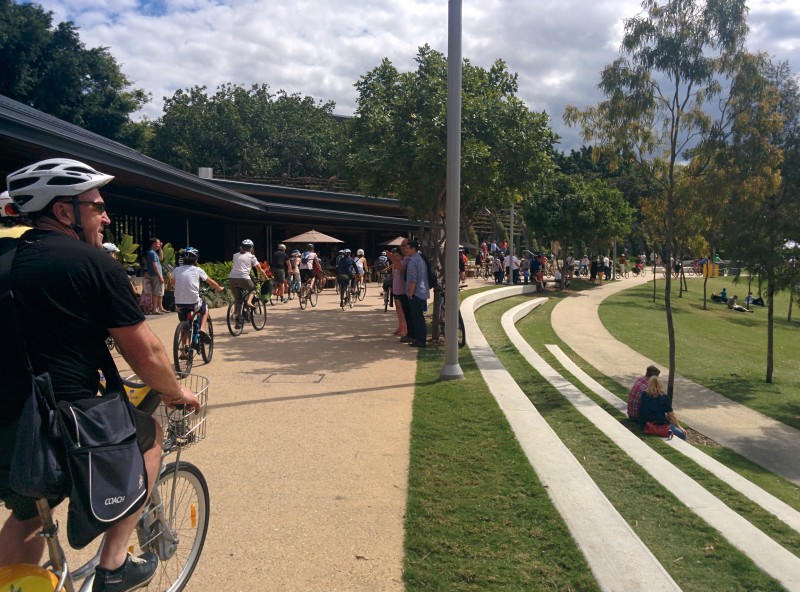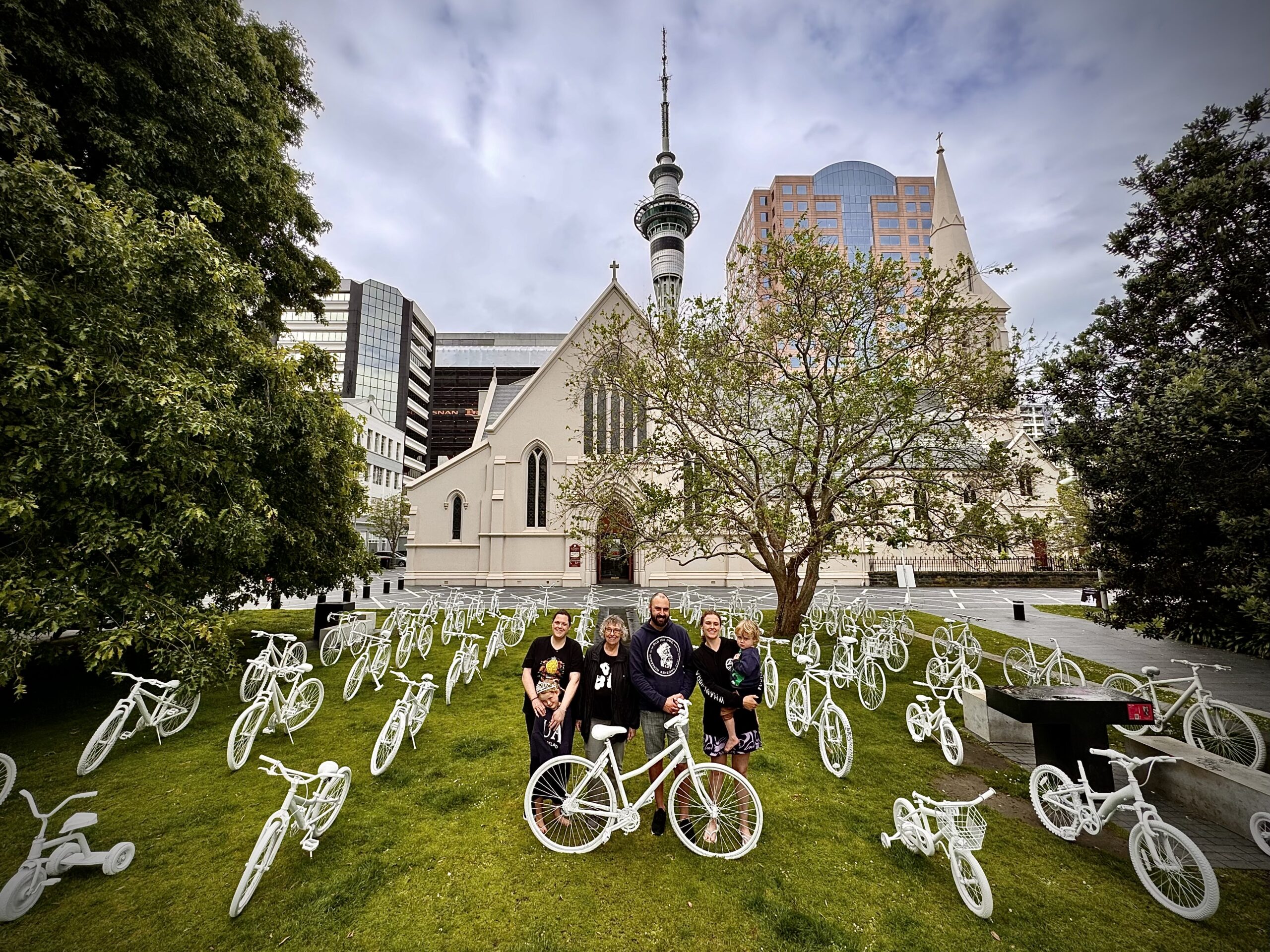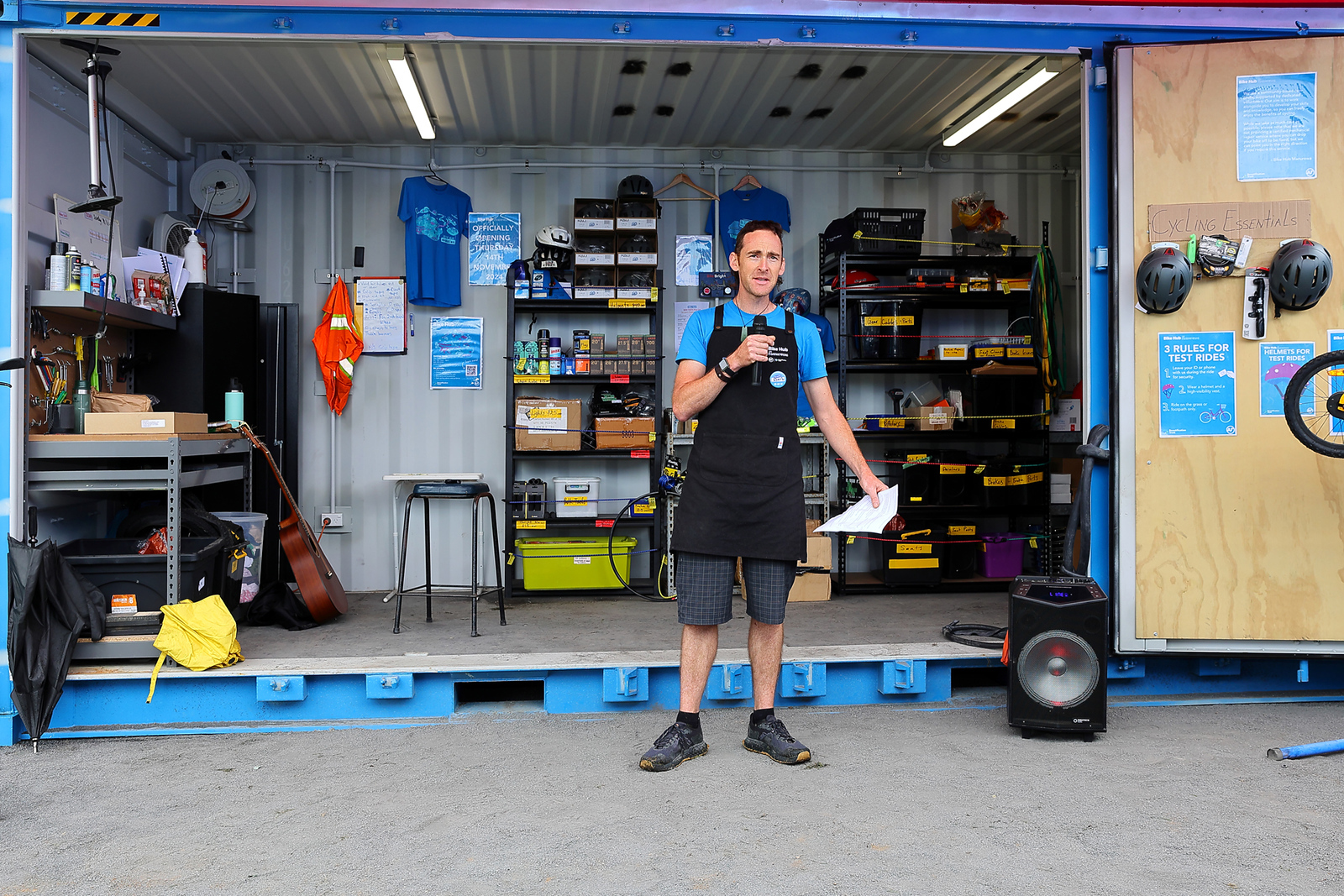Bikes and bike people poured into Brisbane recently for the 2015 Asia Pacific Cycle Congress, which attracted around 230 delegates from Australia and New Zealand, and a keynote speaker from San Francisco. This year’s focus: the economic benefits of cycling, links to the health sector, and new opportunities for the biking industry.
Claire Pascoe, NZTA’s Senior Cycling Adviser, was lucky enough to attend, and soaked up tons of bike news to share with us. Here’s her report:
It was a refreshing (and unfamiliar) feeling to take along a presentation on behalf of NZTA that was a truly good news story of such a significant scale – “Yes, you heard right, we’re investing around $400 million in cycling in urban centres over the next three years”. I felt honoured to be able to share this news on behalf of everyone who’s been working so hard for so long to make it happen.
It wasn’t until the end of the conference, when a few of the key messages were starting to come together in my brain, that I got a new appreciation for the journey New Zealand has been on over the last five years, and what might be our best opportunities for keeping the momentum up. Here are a few revelations from the conference that will really stick with me:
- We need to make sure we’re asking our communities bigger questions than ‘What do you think about this cycleway’? We need to be asking ‘What type of community would you and your kids like to live in?’ – Peter Zanzoterra from Bikeability in the UK calls this ‘consultation beyond the frontage.’ When you ask this bigger question, communities almost always want slow speed, people-and-pet-friendly environments that have nice landscaping and are easy to get around on foot and by bike. With an initial mandate like Christchurch built during their ‘Share an Idea’ campaign, communities are more likely to feel ownership of a project when a concept plan comes back to them reflecting many of the elements they had asked to see. There will still be some ‘bikelash’ issues to work through, but the hurdles will be lower and you will have established a wider support base than normal.
- There are two key demographics that show huge potential for more biking: baby boomers who are becoming active retirees with time on their hands, and those who choose to bike as part of their desire for lifestyle living – the demographic that lives within what Australians call the ‘goat’s-cheese curtain’ of 5km from town, and is more interested in connecting on social media than driving a flash car. It would make sense to appeal to these two demographics when attracting new users to our cycling networks.
- The reason Bikeability in the UK were only getting 50% of kids trained at age 10 -11 was because the other half had never learnt how to ride when they were younger. So they’re now targeting much younger kids with a programme called ‘Balanceability’. The evidence that cycle-skills training leads to more biking to school isn’t that strong and may be the wrong thing to focus on. We need to get the kids on the ladder, riding anywhere for any reason, before they can contemplate cycling to school. Where skills training does lead to more biking to school, it’s where there’s an ongoing programme and wrap-around activities.
- The decline in people riding bikes (as a species) can be partly attributed to the destruction of habitat. Creating habitat for people to ride again is crucial for bringing the ‘people on bikes’ species back from the brink of extinction. Thanks to Peter Zanzoterra again for that cute metaphor. It got me thinking about how recreational facilities may play a role in habitat (re)creation.
- San Francisco continues to be successful in using pilot schemes to get projects on the ground faster, and with less (but not zero) resistance. They can have a new street configuration up within 6-8 weeks using only paint. This low-cost temporary solution provides people enough comfort to start using it, and helps to justify the permanent installation down the track. They now allow 12 months before re-assessing it, to provide sufficent time for the dust to settle and people to get used to it (and come to love it). One of the benefits of this approach is that if one project doesn’t succeed, it doesn’t undermine contemporaneous or future projects.
One of the strongest impressions that I left with is that Nga Haerenga, the New Zealand Cycle Trail, may be one of New Zealand’s most important assets for keeping the biking momentum up. Our Kiwi contingent was frequently (and enviously) asked “How did you do it??” by our Australian counterparts who haven’t been enjoying such a strong political tailwind. There were undoubtedly many factors that led New Zealand to embracing cycling more wholeheartedly, but that job summit back in 2009 was surely a turning point.
When the Australian CEO of Flight Centre spent about 8 minutes of his keynote speech talking specifically about Nga Haerenga, even playing the full Alps to Ocean promo video (which left me teary with pride), it was clear that biking in New Zealand has become something that all political parties can support. It’s a crowd-pleaser, and there’s no doubt those Great Rides, which have helped to bring an entire generation back to their bikes, have played a significant part in moving biking away from the fringe. Bikes make money, and people in the regions – from Waihi to Oamaru – are understanding that in a new way.
With this enlightenment, I think we’ve found an easier road to introduce biking back into the urban environment as we start to consider how it can make (and save) us money there too.
Everywhere there are photos of people genuinely smiling on bikes, the road will also be smoothed that little bit more. Whether it’s kids roaming the school grounds, tourists enjoying our breathtaking landscapes, or ordinary people passing lines of traffic on a separated facility – it’s all making biking more palatable.
I wonder whether for the biking momentum to continue, the transport sector needs to take this broader view and bring our attractive recreational cousins closely along with us, so when we hit stormy bikelash weather, we can shelter in their smiling, uncontroversial embrace and live to see another day.
— Claire Pascoe





